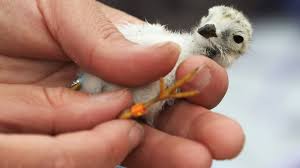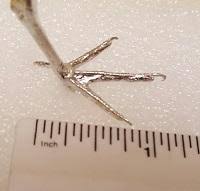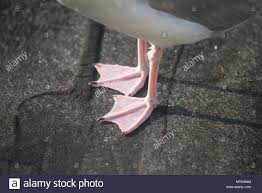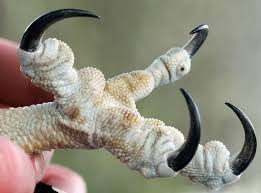Hi Friends…
Do all birds have the same type of feet? Yesterday we talked about camouflage, today we will be talking about the feet on the birds that we have studied this week.
Why do birds have the type of feet that they have? webbed vs. toes & talons.
For this lesson, you will need different types of footwear (shoes, slippers, high heels, flippers, boots, sneakers, flip flops/sandals, etc.)
What is the lesson (overall purpose)? To learn about functional feet of birds.
Most seabirds have flexible webbed feet that help them be powerful swimmers or help propel them across the water to gain speed for takeoff. Some species have strong claws on their feet to help with fishing as well.
MA Guidelines/Standards:
Observe and describe how natural habitats provide for the basic needs of plants and animals with respect to shelter, food, water, air, and light. Link to Living Things and Their Environment 2.8
■ visit locally accessible forests, ponds, seashores or nature museums to observe the characteristics that help birds and animals thrive in their natural habitat (e.g., claws for climbing and digging, fins or webbed feet for swimming; wings for flying, spines for protection).
Build body awareness, strength, and coordination through locomotion activities. Link to Growth and Development 1.1, 1.2
Use both sides of the body to strengthen bilateral coordination. Link to Physical Activity and Fitness 2.1
Learning Outcomes: After looking at birds feet, you will be able to know why the bird has the feet that it does. Does it spend a lot of time swimming in the water? running on the water's edge, or fishing with its talons.
Songs, Books & Videos (Motivational Techniques)
The Foot Book: https://youtu.be/L1TvPIzyu_c
What If You Had Animal Feet: https://youtu.be/LGcTHoBRu3E
Materials:
different types of footwear (flippers, slippers, snow boots, cowboy/girl boots, high heels, flip flops, sandals, etc. )
Activity (Procedure):
Go outside (with a basket of different types of footwear) Preferably be on the grass or someplace soft.
Take 1 pair of footwear at a time, put them on your feet.
Then with each pair of footwear, Carefully try to:
*jump 3x (hold someone's hand for balance)
*3 giant steps forward & then backwards
*walk on your tippy toes
*balance on 1 foot
*walk on the heels of your feet
Try this through wet sand/dirt, grass, etc. Which pair of foot wear is the easiest to walk in with which shoes?
Activity Wrap Up:
What footwear was it the easiest to perform the different movements in?
How do I know what my child is learning? (Assessment)
Talk about different types of animals ...and their feet that they have. Why do you think they have the feet that they do?
How can you extend this activity? (Modifications)
Trace your feet using a pencil or crayon on a piece of paper. Then trace the feet of other members of your family. Do you have the same feet? What is different? What is the same?
Go outside: See if you can find any animal foot prints (or shoe prints). This is a lot of fun to do in wet sand at the beach.
Observe outside or through the window: animals that are in your neighborhood. What kind of feet do they have. Even if you have family pets, look at their feet (gently). Do they have nails or sharp claws? Do they have pads on their feet? Are the bottom of their feet soft? Where do they walk or run?
Helpful Hints: (Pitfalls & Solutions)
If you don’t have lots of footwear at home, you can always make some using tissue boxes, cereal boxes, etc.
Do all birds have the same type of feet? Yesterday we talked about camouflage, today we will be talking about the feet on the birds that we have studied this week.
Why do birds have the type of feet that they have? webbed vs. toes & talons.
For this lesson, you will need different types of footwear (shoes, slippers, high heels, flippers, boots, sneakers, flip flops/sandals, etc.)
What is the lesson (overall purpose)? To learn about functional feet of birds.
Most seabirds have flexible webbed feet that help them be powerful swimmers or help propel them across the water to gain speed for takeoff. Some species have strong claws on their feet to help with fishing as well.
MA Guidelines/Standards:
Observe and describe how natural habitats provide for the basic needs of plants and animals with respect to shelter, food, water, air, and light. Link to Living Things and Their Environment 2.8
■ visit locally accessible forests, ponds, seashores or nature museums to observe the characteristics that help birds and animals thrive in their natural habitat (e.g., claws for climbing and digging, fins or webbed feet for swimming; wings for flying, spines for protection).
Build body awareness, strength, and coordination through locomotion activities. Link to Growth and Development 1.1, 1.2
Use both sides of the body to strengthen bilateral coordination. Link to Physical Activity and Fitness 2.1
Learning Outcomes: After looking at birds feet, you will be able to know why the bird has the feet that it does. Does it spend a lot of time swimming in the water? running on the water's edge, or fishing with its talons.
Songs, Books & Videos (Motivational Techniques)
The Foot Book: https://youtu.be/L1TvPIzyu_c
What If You Had Animal Feet: https://youtu.be/LGcTHoBRu3E
Materials:
different types of footwear (flippers, slippers, snow boots, cowboy/girl boots, high heels, flip flops, sandals, etc. )
Activity (Procedure):
Go outside (with a basket of different types of footwear) Preferably be on the grass or someplace soft.
Take 1 pair of footwear at a time, put them on your feet.
Then with each pair of footwear, Carefully try to:
*jump 3x (hold someone's hand for balance)
*3 giant steps forward & then backwards
*walk on your tippy toes
*balance on 1 foot
*walk on the heels of your feet
Try this through wet sand/dirt, grass, etc. Which pair of foot wear is the easiest to walk in with which shoes?
Activity Wrap Up:
What footwear was it the easiest to perform the different movements in?
How do I know what my child is learning? (Assessment)
Talk about different types of animals ...and their feet that they have. Why do you think they have the feet that they do?
How can you extend this activity? (Modifications)
Trace your feet using a pencil or crayon on a piece of paper. Then trace the feet of other members of your family. Do you have the same feet? What is different? What is the same?
Go outside: See if you can find any animal foot prints (or shoe prints). This is a lot of fun to do in wet sand at the beach.
Observe outside or through the window: animals that are in your neighborhood. What kind of feet do they have. Even if you have family pets, look at their feet (gently). Do they have nails or sharp claws? Do they have pads on their feet? Are the bottom of their feet soft? Where do they walk or run?
Helpful Hints: (Pitfalls & Solutions)
If you don’t have lots of footwear at home, you can always make some using tissue boxes, cereal boxes, etc.




 RSS Feed
RSS Feed
